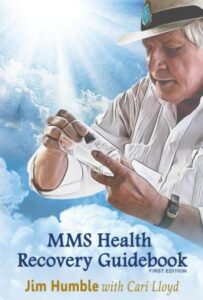Number of COVID Vaccine Injuries Reported to VAERS Surpasses 50,000, CDC Data Show
VAERS data released today showed 50,861 reports of adverse events following COVID vaccines, including 2,249 deaths and 7,726 serious injuries between Dec. 14, 2020 and March 26, 2021 By Megan Redshaw COVID Vaccine Injuries Surpasses 50000 CDC Data Show
Data released today by the Centers for Disease Control and Prevention (CDC) on the number of injuries and deaths reported to the Vaccine Adverse Event Reporting System (VAERS) following COVID vaccines revealed steadily rising numbers, but no new trends. VAERS is the primary mechanism for reporting adverse vaccine reactions in the U.S. Reports submitted to VAERS require further investigation before a causal relationship can be confirmed.
COVID Vaccine Injuries Surpasses 50000 CDC Data ShowEvery Friday, VAERS makes public all vaccine injury reports received to the system as of Friday of the previous week. Today’s data show that between Dec. 14, 2020, and March 26, a total of 50,861 total adverse events were reported to VAERS, including 2,249 deaths — an increase of 199 over the previous seven days — and 7,726 serious injuries, up 631 over the same time period.Of the 2,249 deaths reported as of March 26, 28% occurred within 48 hours of vaccination, 19% occurred within 24 hours and 43% occurred in people who became ill within 48 hours of being vaccinated. COVID Vaccine Injuries Surpasses 50000 CDC Data Show
In the U.S., 136.7 million COVID vaccine doses had been administered as of March 26th.
A team of researchers has found that sunlight neutralizes SARS-CoV-2 8 times faster than initially assumed.
A Team Of Researchers Has Found That Sunlight Neutralizes SARS-CoV-2 8 Times Faster Than Initially Assumed
 Researchers from UC Santa Barbara, Oregon State University, University of Manchester and ETH Zurich are calling for a closer look at sunlight’s ability to neutralize SARS-CoV-2 after finding that the most recent study on the matter was not up to par.
Researchers from UC Santa Barbara, Oregon State University, University of Manchester and ETH Zurich are calling for a closer look at sunlight’s ability to neutralize SARS-CoV-2 after finding that the most recent study on the matter was not up to par.
The team compared data from a July 2020 study that reported rapid sunlight inactivation of SARS-CoV-2 in a lab setting, with a theory of coronavirus inactivation by solar radiation that was published just a month earlier.
They noticed that the virus was inactivated as much as eight times faster in experiments than the most recent theoretical model predicted. “The theory assumes that inactivation works by having UV-B hit the RNA of the virus, damaging it,” UC Santa Barbara mechanical engineering professor and lead author Paolo Luzzatto-Fegiz said in a statement.
“People think of UV-A as not having much of an effect, but it might be interacting with some of the molecules in the medium,” Luzzatto-Fezig explained. Those molecules in turn could be interacting with the virus, speeding up inactivation.
“So, scientists don’t yet know what’s going on,” Luzzatto-Fegiz said; “Our analysis points to the need for additional experiments to separately test the effects of specific light wavelengths and medium composition.”
If UV-A turns out to be capable of inactivating the coronavirus, this could prove very fruitful as there are now many types of inexpensive LED bulbs that are even stronger than natural sunlight. UV-A could also potentially be used to amplify the effect of air filtration systems at relatively low risk for human health.





